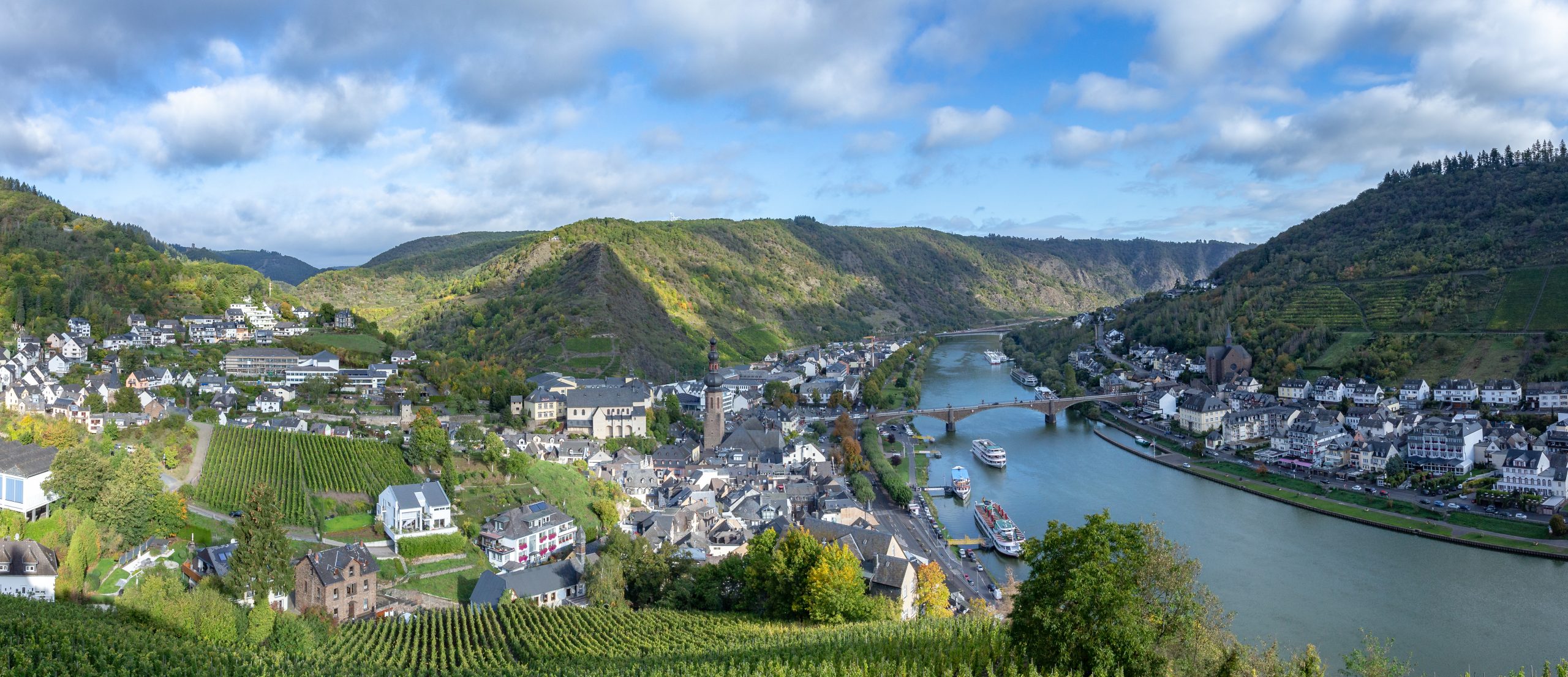Known for its sweeping vistas, dramatic castles and superior Riesling wine, the entire length of the Mosel Valley is full of things to see and do. However, unlike it’s Rhenish counterpart, getting to these places is sometimes a serious challenge. Only one bank of one half the River is served by train and most of the interior is quite remote.
Obviously if you have a car, then these problems are not as much of a concern. Instead, the main issue is likely to be parking. Unlike the Middle Rhine Valley, parking is plentiful and the roads are accessible. Nevertheless, for a region known for its wine, you might reconsider driving to that vineyard.

Establish a Base Camp
The best way to look at the Mosel is to cut it in half. Put those destinations closest to Trier on one side and those closest to Koblenz on the other. In this dichotomy, Cochem is in the middle, though it is slightly easier to reach from Koblenz. In the above map, I summarize the difficulties in reaching various destinations. The circle icons represent rail-accessible destinations, the squares required either a bus, car or significant walking to reach. Those in blue are best reached from Koblenz, in red, from Trier.

There are some surprises, namely that the most popular destination on the Mosel, Bernkastel-Kues, is reachable only via a bus from the train station in Wittlich. Likewise, the Eltz castle is accessible only via a short hike or an infrequent bus from Moselkern. The main take-away here is that you should probably choose either Koblenz or Trier as a base-camp. From either location then do day trips to wherever you want to go.
Travelling By Rail

This map shows the rail infrastructure in this region. The valley is split into two different transport associations, but this shouldn’t have any meaningful impact on you unless you live there. More important are the limitations on rail transport. There are only four rail lines that access the interior of the Mosel Region. These go up the Mosel Valley, Kyll Valley, Ahr Valley and the Andernach-Kaisersesch lines.
To reach more obscure destinations , you will need to take a bus or drive. Fortunately, buses are quite plentiful and run regular hours. You will need to look up the schedules in advance, by using the Deutsche Bahn App or Website for example. Tickets for individual trips are typically cheap, but can only be purchased in cash from the driver. Otherwise the Rhineland-Pfalz ticket will work on all buses for the entire day.
That being said, there are only a handful of destinations worth the bus ride in my opinion. The most prominent being Bernkastel-Kues, Maria Laach, Bürresheim Palace and Münstermaifeld. Other destinations like Castle Eltz or Castle Ehrenburg are much better hiking destinations. Others like Prüm Abbey or Bollendorf are best to reach with a car.
Travel by River
I will also briefly mention here that traveling along a specific river valley can often provide the best experiences. Rivers were used as the primary means of communication and trade, thus binding regions together with shared ideas and cultural influences. In the Mosel region in particular, the Kyll Valley is one of the most spectacular in Germany. Its full of hidden castles and dramatic overlooks. The Ahr Valley offers a similar collection of castles and towns. It was historically bound together by county of Ahrweiler which controlled the upper reaches of the river. Of course the Mosel offers a similar history, binding the Electorate of Trier with the Rhineland. It served as a highway to connect the cultural capital of Trier with the administrative capital of Koblenz.